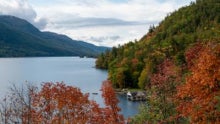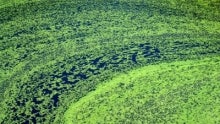RPI Collaborates on First-of-its-Kind Research Study to Keep New York Lakes Healthy
Posted October 21, 2025
RPI professor and freshwater ecology expert Kevin Rose, Ph.D., in collaboration with other researchers from Rensselaer Polytechnic Institute (RPI), the Lake George Association (LGA), and Paul Smith’s College, conducted the first ever long-term study on the environmental effects of the aquatic herbicide florpyrauxifen-benzyl (FPB), also known as ProcellaCOR.




